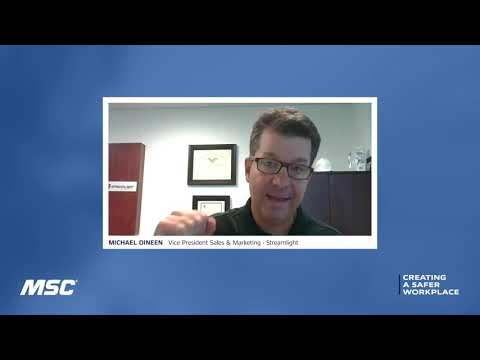Do you have enough air filtration in your facility? It’s a question that’s worth asking as organizations come back online amid the ongoing COVID-19 pandemic. Good air filtration involves understanding the basics of MERV ratings. Here’s what you need to know.
While good indoor air quality is vital inside buildings to provide workers with clean air and to safeguard any sensitive equipment, it’s especially important as organizations seek to keep workers safe from the coronavirus and other airborne hazards.
It’s generally understood that particles that contain COVID-19 may remain in the air long enough to be a hazard to workers, and so there’s a strong need to filter the air that moves through HVAC systems and into spaces where people are working.
Your facility’s air filtration system is therefore a crucial component in protecting workers from the COVID-19 virus. Filtration systems can block out airborne hazards such as viruses, dust, pollen, mold and bacteria.
The American Society of Heating, Refrigeration and Air-Conditioning Engineers (ASHRAE) has designed the Minimum Efficiency Reporting Value (MERV) scale to measure the effectiveness of filters when it comes to capturing the microscopic airborne particles that could make people sick.
Read more: Fogged-Up Glasses: 5 Ways to Keep Eye Protection from Fogging While Wearing a Mask
The Centers for Disease Control and Prevention (CDC) and ASHRAE recommend using an air filter with a minimum rating of MERV 13 whenever possible, while a rating of MERV 14 is preferred. In-room units are recommended for facilities that can’t upgrade their HVAC filters, or increasing the circulation of outdoor air during winter. These units should include high MERV or better filters to remove most of these virus-laden particles.
Late last year, the Occupational Safety and Health Administration (OSHA) published guidance on ventilation best practices in the workplace to combat the spread of coronavirus. Those guidelines include redirecting personal fans away from blowing air from one worker to another, using HVAC system filters with a MERV rating of 13 or higher, where feasible, increasing the HVAC system’s outdoor air intake, and opening windows or other sources of fresh air where possible.
Here are some of the most important things to know about MERV ratings and improving indoor air quality:

Read more: How to Prepare for Possible Viral Outbreaks Within Your Workforce
Best Practices for Replacing Filters
When it comes to servicing filters, OSHA recommends following guidelines from ASHRAE, which include wearing N95 respirators, eye protection (safety glasses, goggles or face shields, for example), and disposable gloves. Bag the filter immediately before disposal and wash your hands after completing the work, ASHRAE also suggests.
If you are trying to replace your filter with a higher MERV filter, be sure it will fit and seal in your system, ASHRAE says: “Look for a filter with a similar pressure drop to the filter you have, or make sure your system can accommodate the upgrade.”
Organizations should also consider filtration efficacy, HVAC performance and worker comfort. It’s important to make sure in advance that your current HVAC system can handle the higher MERV rated filter, because although the highest MERV ratings may remove the most particles from the air, they may also cause your HVAC system to become inefficient, leading to poor climate control and higher energy costs.
Tips to Improve Indoor Air Quality
Here’s a collection of our best articles on air quality and safety:
What Manufacturers Need to Know About Indoor Air Quality Management
The Invisible Danger: How to Protect Against Indoor Air Pollutants
Tips and Tools for Indoor Air Quality and Efficiency in Building Envelopes
Using Fluke Air Particle Counters in Healthcare Facilities
Summer Safety: Beat Workplace Heat Stress with Cool Air, Ventilation and HVLS Fans

Related Articles

Why Fall Protection Remains One of the Most Persistent Challenges in Workplace Safety

Warehouse Safety Guidelines and Rules

Beyond Padlocks: The Future of Complete Lockout Solutions

Maximizing Operational Efficiency: The Critical Role of Hygiene in Industrial Facilities


